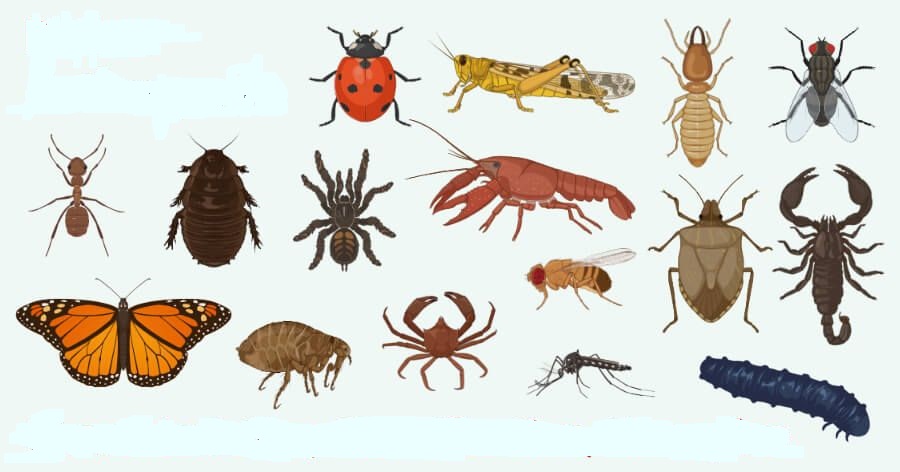Phylum Arthropoda
Arthropods are animals with joint legs. Spiders, ants, bees, crabs, shrimps, millipedes, centipedes, and other insects belong to this phylum of the kingdom Animalia. Arthropods make up more than two-thirds of all identified species on the planet. The presence of an exoskeleton, which makes arthropods adaptable, isprotective and allows flexibility and mobility.It is largely responsible for their success and survival. They are organized at the organ-system level. They are coelomate animals that are triploblastic, segmented, and bilaterally symmetrical. Arthropods have a chitinous exoskeleton covering their bodies. The head, thorax, and abdomen make up the arthropod body. Their appendages are joined. Gills, book gills, book lungs, and the tracheal system are examples of respiratory organs.The circulatory system is open. There are sensory organs like antennae, eyes (complex and simple), and statocysts for balance and orientation. Malpighian tubules are used for excretion. The majority of them are dioecious. Internal fertilization is common. The majority of them are oviparous. Direct or indirect development is possible. Apis (Honey bee), Bombyx (Silkworm), and Laccifer(Lac insect)are some examples of commercially important insects. Anopheles, Culex, and Aedes are examples of vectors (Mosquitoes). Limulus (King crab) is known as a living fossil, while Locusta(Locust) is a gregarious pest.


 ACME SMART PUBLICATION
ACME SMART PUBLICATION
